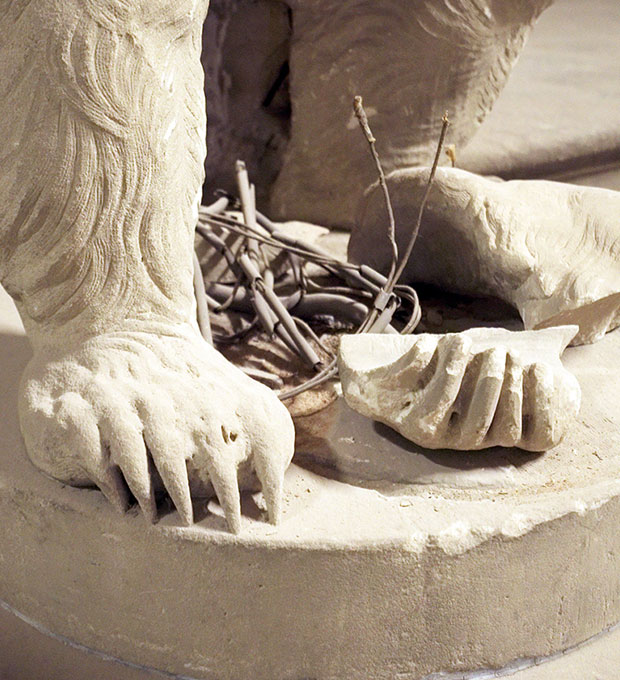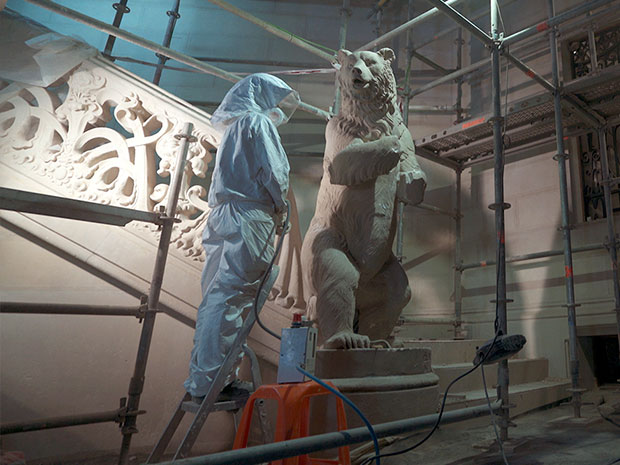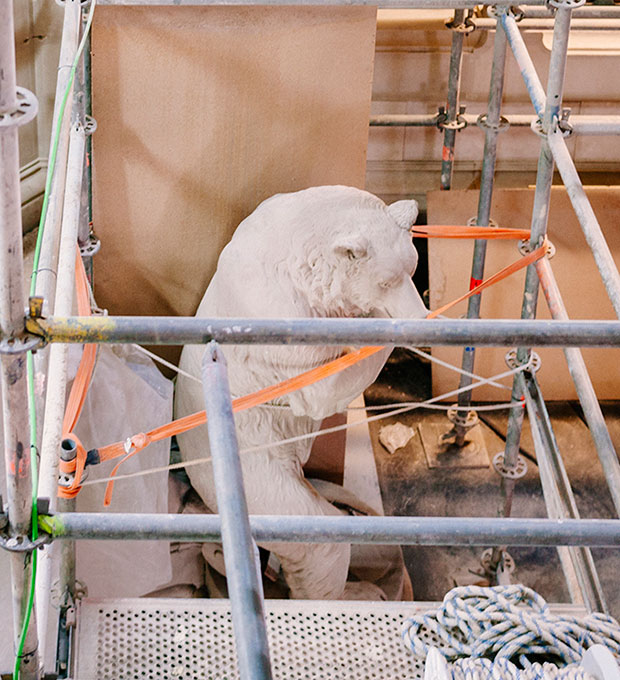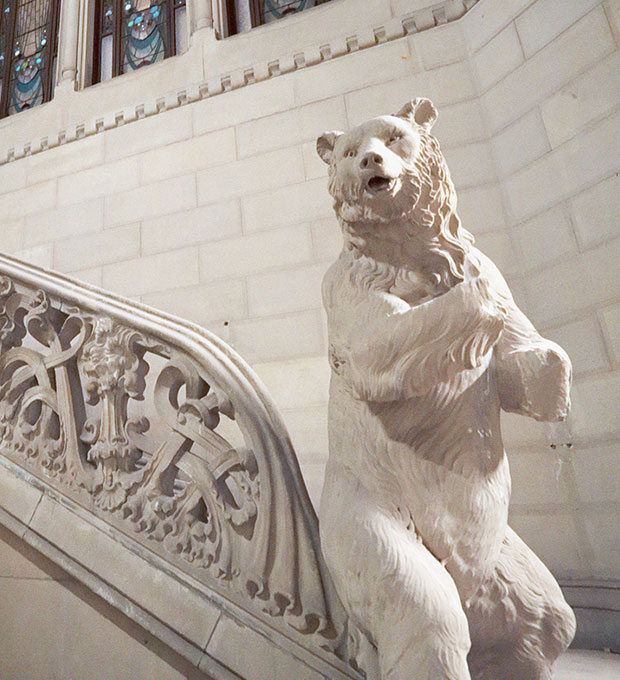In the Casa Burés entrance hall, a stone bear welcomes residence owners and their guests, and scares away intruders.
The life-size sculpture of a bear standing on its hind legs at the foot of the staircase certainly can’t be missed. This imposing sculpture was created by the Modernist artist Joan Carreras, whose work can be found at the National Art Museum of Catalonia (MNAC).
This craftsman was a renowned sculptor and carver, and a key collaborator of Gaspar Homar, considered one of the Catalan Modernist movement’s most prominent furniture designers and decorators.










